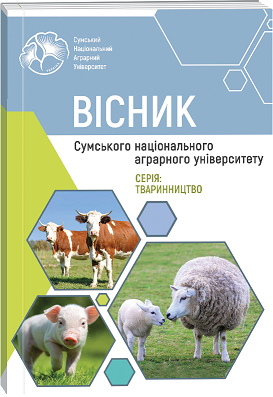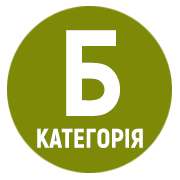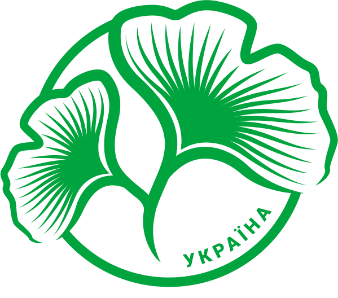RELATIONSHIP BETWEEN CARCASS FATTY TISSUE COVERAGE AND BEEF QUALITY TRAITS
Abstract
In European standards, the fat tissue coverage of cattle carcasses is used to assess their quality and determine the value of products. Determining the correlation between the classification of carcasses by fat coverage of animals of different productivity directions with slaughter and quality traits of beef is relevant for both producers and the processing industry. The purpose of this study was to determine the relationship between the development of carcass fat, estimated by the EUROP (2008) system, and its morphological composition and quality traits in crossbred bulls sired by Ukrainian Black-and-White dairy (UBW) cows and Holstein (H) bulls. The study was conducted on 26 carcasses in the farm “Zhuravushka” of Brovary district, Kyiv region. For this purpose, 20-22-month-old crossbred bulls were slaughtered in the slaughterhouse of Kalynivka village. The pre-slaughter live weight of the animals was determined by weighing them before and after a 24-hour fast with free access to water. After slaughtering, the development of fat on the carcasses and their conformation (meatiness) were assessed according to the Commission Regulation system (EC, 2008). The marbling of m. longissimus dorsi, the color of muscle and adipose tissue were examined in accordance with the Japan Meat Grading Association standard (2000). It was found that the development of fat on the carcass is significantly (P>0,95) inversely correlated with the relative content of muscle tissue of the highest grade (r=-0,597) and positively with its amount of the second grade (r=0.609), the thickness of fat under the skin (r=0,646) and marbling of beef (r=0,661), which positively affects consumer choice and sensory characteristics and quality attributes of the finished product. There is a tendency for an inverse correlation between the development of fat on the carcass and slaughter yield (carcass) (r=-0,237), percentage of first grade muscle tissue (r=-0,457), amount of adipose tissue (r=-0,170), tendons and ligaments (r=-0,490), area of the «muscle eye» m. longissimus dorsi (r=-0,389) and positive with the content of muscle tissue (r=0,492) and its color (r=0,483), the number of bones (r=0,554) and the conformation (meatiness) of the carcass (r=0,565). In the future, the results obtained can be used to predict the quantitative and qualitative traits of beef by the development of fat on the carcass during their evaluation at slaughterhouses in the country.
References
2. Brito, G., Soares de Lima, J. M., Del Campo, M., Luzardo, S., Correa, D., & Montossi, F. (2024). The implementation of grading systems for beef carcass value differentiation: the Uruguayan experience. Animal Frontiers. 14 (2). 29–34. https://doi.org/10.1093/af/vfae004.
3. Commission Regulation (EC). 2008. Commission Regulation (EC) No 1249/2008 of 10 December 2008 laying down detailed rules on the implementation of the Community scales for the classification of beef, pig and sheep carcasses and the reporting of prices thereof https://publications.europa.eu/en/publication-detail/-/publication/9716803a-8887-4956-9877-629031ec7723/language-en 23.11.2018
4. Conroy SB, Drennan MJ, McGee M, Keane MG, Kenny DA, Berry DP. (2010). Predicting beef carcass meat, fat and bone proportions from carcass conformation and fat scores or hindquarter dissection. Animal. 4, 234 – 241. https://doi.org/10.1017/S1751731109991121
5. Foraker, B. A., Johnson, B. J., Brooks, J. C., Miller, M. F., Hardcastle, N. C. & Woerner, D. R. (2024). Carcass Yield and Subprimal Cutout Value of Beef, High- and Low-Yielding Beef × Dairy, and Dairy Steers. Meat and Muscle Biology, 8(1), 17004, 1 – 16. doi: https://doi.org/10.22175/mmb.17004
6. Haderlie, S. A., Hieber, J. K., Boles, J. A., Berardinelli, J. G., & Thomson, J. M. (2023). Molecular Pathways for Muscle and Adipose Tissue Are Altered between Beef Steers Classed as Choice or Standard. Animals, 13(12), 1947. https://doi.org/10.3390/ani13121947
7. Heggli, A., Gangsei, L. E., Røe, M., Alvseike, O., & Vinje, H. (2021). Objective carcass grading for bovine animals based on carcass length. Acta Agriculturae Scandinavica, Section A – Animal Science, 70(2), 113-121. https://doi.org/10.1080/09064702.2021.1906940
8. Herva, T., Huuskonen, A., Virtala, A. M., & Peltoniemi, O. (2011). On-farm welfare and carcass fat score of bulls at slaughter. Livestock Science, 138(1-3), 159-166. https://doi.org/10.1016/j.livsci.2010.12.019
9. Hessle, A., Dahlström, F., Lans, J., Karlsson, A. H., & Carlsson, A. (2024). Beef production systems with dairy× beef heifers based on forage and semi-natural grassland. Acta Agriculturae Scandinavica, Section A – Animal Science, 1-12. https://doi.org/10.1080/09064702.2024.2305366
10. Janiszewski, P., Borzuta, K., Lisiak, D., Powałowski, K., & Samardakiewicz, Ł. (2015). Effect of carcass conformation and fatness on beef pH and characterization of the purchase structure of domestic beef cattle. Scient. Ann. Pol. Soc. Anim. Prod, 11(3), 56 – 67.
11. JMGA. Beef carcass grading standart. Japan meat grading association. – (2000). Tokyo, Japan. https://twinwoodcattle.com/sites/default/files/publications/2017-06/TWRA120_Japan_Beef_Carcass_Grading_Standard.pdf
12. Ju, M. S., Jo, Y. H., Kim, Y. R., Ghassemi Nejad, J., Lee, J. G., & Lee, H. G. (2024). Supplementation of complex natural feed additive containing (C. militaris, probiotics and red ginseng by-product) on rumen-fermentation, growth performance and carcass characteristics in Korean native steers. Frontiers in Veterinary Science. 10. 1300518. https://doi.org/10.3389/fvets.2023.1300518
13. Kruk O. P., & Uhnivenko A. M. (2024). Marmurovist m. longissimus dorsi ta yii zviazok z inshymy oznakamy yalovychyny. [Marbling of m. longissimus dorsi and its relation to other beef traits]. Visnyk Sumskoho natsionalnoho ahrarnoho universytetu. Seriia: Tvarynnytstvo, (3), 61 – 68. https://doi.org/10.32782/bsnau.lvst.2024.3.7.
14. Kruk O. P., & Uhnivenko A. M. (2024 а). Zabiini i miasni yakosti chystoporodnykh i pomisnykh buhaitsiv ukrainskoi chorno-riaboi molochnoi porody. [Slaughter and meat qualities of purebred and crossbred bulls of the Ukrainian Black-and-White dairy breed]. Zbirnyk naukovykh prats «Tekhnolohiia vyrobnytstva i pererobky produktsii tvarynnytstva», № 1. 18–25. https://doi: 10.33245/2310-9289-2024-186-1-18-25 [in Ukrainian]
15. Martínez, A., Aldai, N., Celaya, R., & Osoro, K. (2010). Effect of breed body size and the muscular hypertrophy gene in the production and carcass traits of concentrate-finished yearling bulls. Journal of animal science, 88(4), 1229 – 1239. https://doi.org/10.2527/jas.2009-2025
16. Mendizabal, J. A., Ripoll, G., Urrutia, O., Insausti, K., Soret, B., & Arana, A. (2021). Predicting Beef Carcass Fatness Using an Image Analysis System. Animals 2021, 11, 2897. Carcass and Meat Quality in Ruminants, 141. https://doi.org/10.3390/ani11102897
17. Nakaz za № 290 vid 06 serpnia 2004 r. «Pro zatverdzhennia instruktsii z otsinky knuriv i svynomatok za yakistiu potomstva v umovakh spetsializovanykh kontrolno-vyprobuvalnykh stantsii». [«On approval of the instruction for evaluation of boars and sows for the quality of offspring in the conditions of specialized testing stations»]. [in Ukrainian]. https://zakononline.com.ua/documents/show/250143___250208
18. Nogalski, Z., Pogorzelska-Przybyłek, P., Sobczuk-Szul, M., & Purwin, C. (2019). The effect of carcase conformation and fat cover scores (EUROP system) on the quality of meat from young bulls. Italian Journal of Animal Science, 18, 615 – 620 https://doi.org/10.1080/1828051X.2018.1549513
19. Osadcha Yu.V. (2021). Matematychni metody v biolohii. [Mathematical methods in biology]. Kyiv: TSP «Komprynt» [in Ukrainian].
20. Pesonen, M. (2020). Growth performance, carcass characteristics and meat quality of different beef breeds in typical Finnish production systems: Doctoral Dissertation.
21. Qin, X., He, X., Chen, L., Han, Y., Yun, Y., Wu, J., Sha, L., & Borjigin, G. (2024). Transcriptome analysis of adipose tissue in grazing cattle: Identifying key regulators of fat metabolism. Open Life Sciences, 19(1), 20220843. https://doi.org/10.1515/biol-2022-0843
22. Rutherford, N. H., Gordon, A. W., Arnott, G., & Lively, F. O. (2020). The effect of beef production system on the health, performance, carcass characteristics, and meat quality of Holstein Bulls. Animals, 10(10), 1922. https://doi.org/10.3390/ani10101922
23. Santinello, M., Penasa, M., Goi, A., Rampado, N., Hocquette, J. F., & De Marchi, M. (2024). Relationships between European carcass evaluation and meat standards Australia grading scheme applied to young beef cattle. Meat Science, 109575. https://doi.org/10.1016/j.meatsci.2024.109575

 ISSN
ISSN  ISSN
ISSN 



